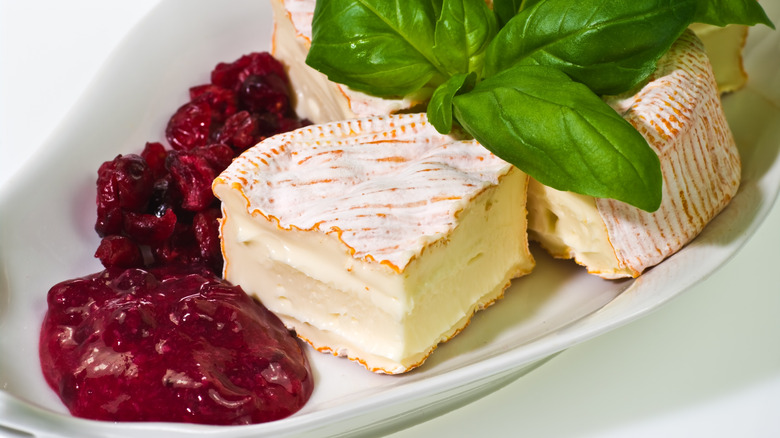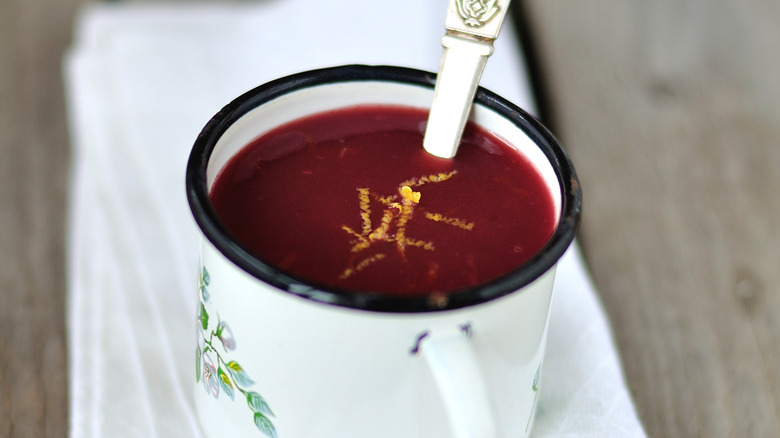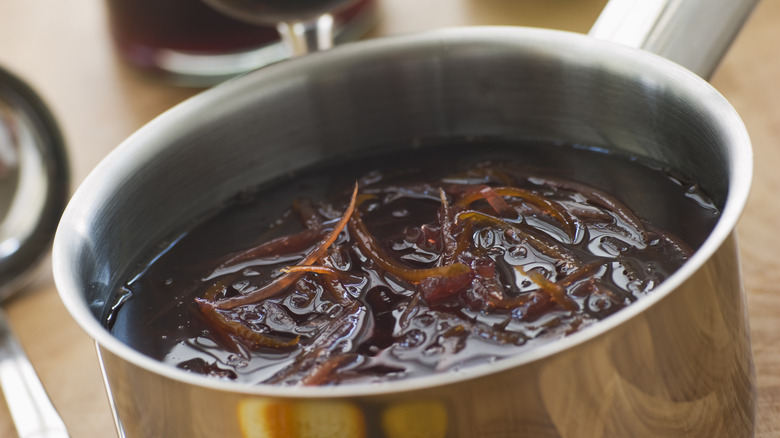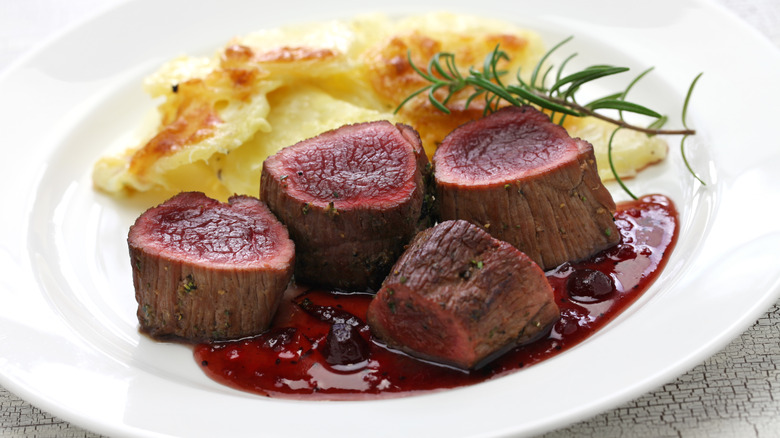Cumberland Sauce Is The Semi-Sweet Addition Every Ham Needs
Sauces can serve a variety of roles, from defining a pasta dish to being an extra flair on top of something more layered. Around for thousands of years, they've long been a vessel for amplifying tasty flavors and concealing unappetizing qualities. British Cumberland sauce serves exactly such a purpose. A continuation of medieval condiments used to cut through gamey meats, this concoction integrates a medley of highly-aromatic components. It starts with a red currant jelly infused with fresh citrus, port wine, and spices. Some cooks craft it with a kick, but even without, the sauce comes with an easy-to-love sweet and sour taste.
Cumberland sauce is traditionally served as a condiment with ham, and a small amount goes a long way. It seamlessly aligns with salty flavors or the gaminess of wild meats, which makes it a perfect sauce for the holiday table. For these reasons and more, it's been going strong for over a century.
Cumberland sauce is an old-school British staple
This tart and fruity sauce intertwines with British cuisine, although its origins are murky. Evidence suggests the extended ingredient list came together sometime in the 19th century. A recipe for one early version of the concoction was printed in an 1817 compendium titled "Cook's Oracle." The recipe called for port wine and currant jelly, however, it was not yet called Cumberland Sauce. The moniker is believed to have been later attributed to the Duke of Cumberland, brother of British monarch King George IV. During this period of the 19th century, the British crown also ruled over Hanover in Germany. As a result, some believe the sauce originally hails from Germany and was carried from there to the British Isles. Regardless of the exact emergence, Cumberland sauce was definitively ascribed to British cuisine by the late 1800s.
In structure, the sauce draws from flavor-dense medieval sauces. Influences likely include Cameline sauce made with red wine, vinegar, and spices. Such ingredient combinations were created to serve alongside meat, cutting through any gamey or off-putting flavors. Although the hunted animals were later replaced with ham, the sauce's aromatic character continued.
How Cumberland sauce is made
Cumberland sauce frequently includes up to 10 components. There can be a lot of variation in ratios and ingredients, but it always builds upon a similar assortment of core flavors. The most common addition is red currant jelly, which lends it a sweet and sure backbone. Such a flavor is accompanied by both the rind and juice of citrus, typically oranges and lemons. The boozy notes classically come from port, although it may also be dry sherry or red wine. Those who want to spice it up will add mustard, cayenne pepper, and ginger. A small amount of shallots might also end up in the mix.
The assembly of the sauce is fairly straightforward. Start by blanching the citrus rinds, depending on their quantity and thickness. Next, the currant jelly is melted in a saucepan, and the rest of the ingredients are incorporated. The mixture is brought to a boil while consistently being stirred. Then, the result is slowly reduced for up to half an hour. In order to attain Cumberland sauce's signature thick texture, it's cooled and then reheated again before serving. Refrigerated, it'll store for up to two weeks.
Pairing Cumberland sauce with foods
The sauce's tangy, sweet, and fruity notes pair in a fashion similar to cranberry sauce. Like its tart cousin, Cumberland sauce is served as a condiment, contained in a small serving platter. It gets spooned onto the meat as a garnish or on the side. Cumberland sauce shines especially well with cured ham, with the bright components cutting through the meat's salty nature. Cumberland sauce can also accompany other strongly flavored cuts, such as wild birds like duck and goose. Or it can be served during a Thanksgiving day spread, spooned onto turkey.
Consider amending its components to suit other cuts, too. With a spicier kick, it'll function better with red meats, such as lamb, venison, or even a beef roast. As part of a larger meal containing potatoes and other sides, it can be a vessel that intertwines several elements. To really bring to light the sauce's complex character, pour yourself a glass of the utilized port to enjoy with the meal.



